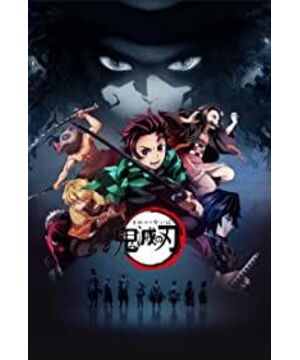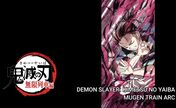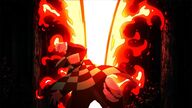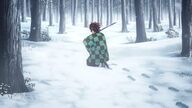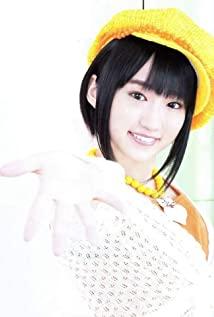This messy, unbounded, unfounded random thought, the motivation for writing was just a whim of the past few days. If it were in a real world without ghosts, to be precise, what was Tanjirou’s real life in the past folklore society? of. Fictional characters often have real traces. Even if the author does not deliberately pay attention to the background of history and folklore, it is difficult to deny the intertextuality between character setting and folklore culture. I haven't read cartoons, so I have limited understanding of the works, so I hope to get rid of it.
Charcoal Burner's World
In ancient times, charcoal was an indispensable fuel in life, so the charcoal-burning profession also has a long history. There is a record of "12 Dendrobium barbarum and Dendrobium charcoal" ( Waste charcoal is hard charcoal, and charcoal is soft charcoal), and charcoal is also scattered in shell mounds of the earlier Stone Age. In the picture scroll "Seven-Eleven Banshito Gehe" at the end of the Muromachi period, many craftsmen at that time are listed. In this "Shiren Gehe", there are 71 groups of craftsmen, each group is divided into two pairs of left and right, chanting waka with the theme of "moon" or "love" (of course made by aristocrats), the picture scroll includes such things as Craftsmen such as "smiths", "lumberjacks" and "winemakers", as well as small vendors such as "rice vendors" and "tofu vendors", as well as "white beaters", "tian music masters", "ape music masters", and "pipa" Wandering artists such as "Masters", and even low-level clerics such as "Buddhist Masters", "Onmyoji Masters" and "Shan Fu". "Charcoal Burners" are certainly among them.
In the "Shiren Gehe" picture scroll, the craftsmen who are "closely connected at work" will be grouped into the same group. Therefore, the charcoal burners and Ohara girls who belong to the fuel production and sales links are also in the same group (Ohara girls). , Usually called "Ohara girl (おはらめ)", a woman who sells charcoal on her head and walks the streets and alleys, named because Ohara is a famous charcoal producing area), the "word in the picture" on the head of the character is between them Dialogue, the dialogue of the characters in this picture is:
炭焼(すみやき) けさ出でさいまうたか
Charcoal Burner: Have you been out this morning?
小原女(おはらめ) あごぜは、まいりあひて候けるか
Xiaoyuannv (to another Xiaoyuannv): Where did you meet him (the charcoal burner)?
In addition to the "Seventh-Fan Zhiren Gehe", there are also the "Northeastern Institute Shiren Gehe" and "Thirty-two Fanshiren Gehe", which were established earlier. The types and numbers of occupations have changed correspondingly with the age, such as "Charcoal Burner" only appeared in "Seventh-Fan Shiren Gehe", and "Northeast Institute Shiren Gehe" and "Thirty-two Fanshiren Gehe" did not appear. Therefore, "Shiren Gehe" is also an investigation of various ancient occupations. Important historical data of changes and differentiation.
Charcoal production
The process of making charcoal is generally done in the charcoal kiln hut, the traditional charcoal kiln hut is as follows:
As you can see, the structure is exactly the same as in the animation.
The structure of the charcoal kiln is like this. The flue opening at the innermost point leads to the chimney on the roof, which removes the smoke produced during charcoal burning.
First put the wood used for firing, start stacking from the innermost side, and be careful not to form extra gaps when stacking.
When stacking timber, lay the timber horizontally on the upper part and near the entrance to avoid gaps or rolling off.
Next, put refractory bricks at the entrance, but it is not completely closed. A small opening will be left above to ensure the passage of fire.
Once the fire is built, the firing process officially begins. In order to ensure that the fire is not extinguished, the charcoal burner will stand in front of the furnace and add fuel according to the fire. The entire firing process takes about two weeks.
The life and beliefs of charcoal burners
If you have read "Life in the Mountains" by Yanagida Kunio, you must be impressed with the account of the charcoal-burning man at the beginning. This tragic case occurred in the Meiji period. It seems a little inappropriate to put it here, but you can see some modern burns. The living conditions of the Tan people, due to the large number of original texts, only translated texts are included here.
Perhaps I am the only person who still remembers this incident. About 30 years ago, during a particularly sluggish period, a charcoal burner in the West Mino Mountains, a man in his 50s, killed two of his children with an axe.
His wife died very early, leaving the 13-year-old boy behind. After that, for some unknown reason, she adopted another girl of the same age, and the three of them lived together in a charcoal hut. I forgot the names of the two children. The charcoal-burner still couldn't sell charcoal. He went to the village under the mountain many times, but he still didn't get rice. Until the day of the incident, he still returned empty-handed, unable to bear to see the child's hungry face, so he retreated to the corner of the cabin and lay down to rest.
When I woke up, the afterglow of the setting sun fell on the door of the hut. It is the end of autumn. The two children squatted in the sunny place, constantly doing something. They walked up to see that they were sharpening the axe blade seriously, "Father, use this to kill us." After speaking, the child lay on his back on the firewood at the door and fell asleep. Looking at the child, the charcoal-burner had dizzy eyes and cut off their heads in a trance. Did not end his life and was eventually arrested and imprisoned
Filtering out the tragedy of the case, we can see some fragments of the life of the charcoal burner during the Meiji period. The charcoal-burners in modern society still live in the mountains as they did in the past. They only go down to the town when they need to exchange for the necessities of life such as rice. Unlike farmers who work in rice fields, the livelihood of charcoal-burners is different. It is to cut wood and burn charcoal, and then take the finished product to the village in exchange for rice and other food. In the past, the main fuel for farmers was charcoal, coal, or firewood. In this way, a kind of interconnection was formed between farmers and charcoal burners. Partnership.
In addition to the charcoal-burners, there are woodcutters, hunters, iron smelters, etc. who live on the mountains. These people who have been with the mountains for generations have formed a culture different from those of the farmers on the flat land. They are villages in a closed society. In the eyes of residents, these mountain people who have no fixed place of residence and migrate in the deep mountains, like the street performers who wander from one village to another, are obviously outsiders who need to keep their distance.
The charcoal-burning people living in the deep mountains have different beliefs from those of the peasants. For example, the belief in "Golden House God (かなやごかみ)" was originally a god believed by craftsmen such as blacksmiths and smelters. When there is no division of labor, the charcoal burner and the blacksmith belong to the same profession. This affinity is also reflected in the ancient mythology. Jinshanyan and Jinshanyuan, which are related to the god of gold house, were born after the god of fire Kagutu. (In "Ancient History", Izanami was ill after giving birth to the god of fire Kagutu, and Jinshanhiko and Jinshanyuan were subsequently born from Izanami's vomit).
Tanjiro's social identity
The "very folk" in the folk society
In folklore, "common people" is an important concept. Yanagida Kunio explained the "ordinary people" in the "Law of Research on Rural Life". "Ordinary people", in short, are farmers who settle on a certain piece of land and engage in agricultural cultivation. In the past, this huge group accounted for most of the population of Japan. From the end of the Middle Ages to the Modern Ages, they settled in the plains. By the Edo period, the farmers occupied the total. 70% of the population. Compared with the "ordinary people", there are many other groups in Japan. They do not have a fixed residence, wander around, do not engage in agriculture, and make a living in some special professions. These groups are generally called "extraordinary people" and "wandering people". ", Yanagida Kunio described this:
Ordinary の farmer でなく、昔から诸职とか诸道などゝといつて、一許せられてゐた者であり、親的にはは鋼飯屋、鐵屋など、くこは村がくは村くくくくははがくくくくははくくくははがくくくははくくくははがはくくくくこはははくくくくくくはははがはMove って行く Wanderer (Yagida Kunio "The Research Method of Rural Life"
Generally speaking, these drifters are not ordinary farmers. Since ancient times, they have been engaged in various occupations such as blacksmiths and coopers. After a short stay in a certain village, they will soon go to other places.
Compared with settled farmers, non-settled people who often wander are often treated differently, are excluded from the village community, and become excluded. The collection of ballads from the late Heian period "Liangchen Secret Copy" contains popular folk songs at that time. Through these ballads, one can understand the life situation of "very folks". For example, a ballad of the witch wrote:
我が子は十余に成りぬらん巫してこそ歩くなれ田子の浦に汐邊むといかに海人集うらんまだしとて问ややとて问まらとて问まるとて问まらとて问まらとみ问ややしいししら
My child in his teens became a witch, wandering, wandering, watching the tide, divination, and fishermen gathered around to make things difficult and find faults. It’s really sad.
At that time, the lower-ranking folk maidens did not have a fixed shrine to which they belonged. In order to maintain their lives, they wandered around and depended on fortune-telling or temporary sacred deeds for their livelihood. On the one hand, the instability of life made their situation difficult, on the other hand, they also made them discriminated against. Object.
As a "very people" charcoal burner
Obviously, charcoal burners who maintain different living habits from flat-land farmers are also "extraordinary people." In some places in the San'in area (western Honshu), charcoal burners were called "shanzi" in the past, and farmers in the village will go to the mountains. Burning charcoal is called "Godangshanzi". "Boqi's Ji" describes:
山子は門許山人の类にて、大山の如き深山に居し、熊笹を以て鳥の巣にも比すべき名ばかりの家を造り、戸りの家を造り、戸济の来風くく,就学のりくのりく,就学の来風く㏁のりもなく㏁のりもなくくのりずの来Such as く去り, 炭焼を業として転々するものである (Sadakichi Kita "Tan of the Elders of Charcoal")
"Shanzi" belongs to the category of mountain people, living in the deep mountains, with a simple bamboo house as home, without household registration, without school, coming and going like the wind, burning charcoal as a career, and whereabouts are uncertain.
It can be seen that charcoal-burning people, like woodcutters and hunters who live in the mountains, often wander around. It is undoubtedly a strange existence in the eyes of the flat people, so the flat people have the mentality of repelling and fearing the "alien" in these big mountains, and call them "mountain people." The special habits and temperament of the mountain people are also the source of the fantasy of different worlds of the flat residents. The "mountain ghost", "mountain grandma" and "tengu" in folklore are all related to the mountain people.
木曽の山奥で岩魚を飛っている亲爷でも、たまたま里の人に出くわしても何の養心とと。行く見向きもぎ路くっげこもぎ路くくげこてかかっこここてと 文字に现わせない孤孤の威圧が、久しうして人の心理を変化せしめることは想像することができる。そうしてこんな人にわずかな思索力、ないしはわずかな意愛があれば、すなわち行者でるとり、得くれる仙とり、得れれる仙とり、得われる仙とり、得われる仙とり、るれれれる仙とり、るれれれる仙とり、るれれれる仙とり、るれる Ma ta Tengu と known also from the mountain の Ling ga eye Color of terror ro shi ku ya ya Genki む tsu ka shi ku ka tsu meaning to E い moo の と test え ra me cry te IRU の moo, part of wa ko の kinds of mountains の person ni every っ ta Jing in Experimental ga, root wo na shi te IRU の ka moo shi me cryぬ (Yagida Kunio "Mountain Life")
Just like the old man fishing for rock fish in the deep mountains of Kiso, occasionally he went down the mountain to meet the villagers, and walked by himself as if he hadn't seen him. The deep sense of loneliness in the mountains is hard to describe in words. It is not difficult to imagine that this sense of loneliness gradually changed their hearts over time. In this way, people with a little thinking or faith will naturally regard them as practitioners of Taoism, or as immortals. And tengu, a spiritual creature in the deep mountains, often has terrifying eyes, aloof and bad personality. I am afraid that part of this kind of image is also derived from people's actual experience of mountain people.
In "Shanren Kao", Yanagida Kunio believes that "Shanren" is the ancestor of Japan. When Sadakichi Kita mentioned the Yamato natives encountered during the Jinbu Eastern Campaign (Yamato natives placed charcoal fire on Sumizaka against Emperor Jinmu’s army), he pointed out that burning charcoal was a technique of ancient natives, and burning charcoal should be left in the mountains. The livelihood of the first inhabitants.
Treatment of "extraordinary people"
The decree of the Dahua Reformation clearly stipulated the difference between the legal treatment of "good men" and "servants". It is worth noting that the word "liangren" is pronounced as "オオミタカラ", and this word is also used for words such as "people" and "citizens". "Omitakara", also known as "Omita Clan", refers to farmers who cultivated the fields directly under the emperor's jurisdiction. It is also written as "Great Yucai" in other ancient documents. It can be seen that farmers who cultivate and produce food on the land are regarded as wealth, which is the embodiment of the idea of valuing agriculture. The term "people" refers only to farmers, people who are engaged in other industries or untouchables, who have no surnames, or wandering and nowhere, not registered in the household registration, "民 (たみ)", that is, "Tianbe", originally also Refers only to farmers. Under the ancient country’s valuing agriculture, only farmers were regarded as citizens of the country, and non-agricultural groups were not considered. But even so, it may not be accurate to say that "very people" are discriminated against just because of this.
For the discrimination problem in ancient times, "obscene" is also an important concept that needs to be considered. Kida Sadakichi explained "obscene" in this way:
愛愛の經決とは、我が神明什だしく親れを忌み给うが故に、これに應れたものは神に近づくべといといらがくべといのれの親のれめといなっていたのである. (Kita Sadakichi's "An Introduction to Untouchables")
The taboo of being filthy is because the gods in our country are the most taboo of "filthy", and people who come into contact with "filthy" cannot approach the gods. Among the many "filthy", flesh-eating is the heaviest in the Middle Ages.
In Shinto, “filth” is very taboo. Before the Shinto rituals, fasts or scums are often carried out to remove the ominous things from the body and keep the body and mind clean. Nevertheless, meat killing was not a taboo before Buddhism was introduced. Animals were also offered as sacrifices when offering sacrifices to gods. However, with the spread of Buddhism, meat killing was gradually regarded as a kind of "filth", and shrines began to be taboo. As a result, people engaged in related occupations have also become taboos.
杀生肉食者は、神に近づくことが出ぬのみならず、Everything else his houseと出入りすることをも忌避されたのであった。かくの如き次第で、杀生肉食常习者は、次第に社会圏外に置かれ、普通民からは相手にされなくなる。(Kita Sadakichi's "An Introduction to Untouchables")
Killing carnivores cannot approach the gods, not only that, but entering and leaving ordinary people's homes has also become a taboo. In this way, they were gradually excluded from the social circle, far away from the general public.
In the ballad of "The Secret Copy of Liang Chen", these people who had to kill for their livelihood sighed helplessly:
魚飯はいとおしや万劫年経る亀杀しまた鵬の首を结い
Current World はかくてもありぬべし后生わが身をいかにせん
It’s so sad, the cormorant, who killed the ten-thousand-year-old tortoise and forced the cormorant to catch the fish in this life. How about retribution?
Not only people engaged in animal slaughter, but also related occupations, such as people making leather, handling animal carcasses, and even funeral related practitioners, have also become taboo objects. The untouchables of Japan in the Edo period, “エタ” originally referred to craftsmen engaged in leather processing. “エタ” means “れれ多し”. These people usually live on the banks of the river. Known as "Kawara".
Discrimination against "extraordinary people" is also related to people's perceptions and beliefs about "dirty" in different times and stages. At least in the 13th-century picture scroll Tengu Papyrus, although "エタ" is portrayed as a bird hunter, on the other hand, it is also recorded in the poetry book that he has the spirit to subdue the tengu. force. The wandering entertainers of the Middle Ages often played a major role in the dance music of temples and shrines, and the folk gods of rice planting. It can be seen that in addition to taboos, people in the Middle Ages also have some sense of awe. They are taboo, in other words, they are extraordinary existence, but at the same time they have spiritual power and are closer than ordinary people. God's realm. However, with the progress of civilization, the sense of fear and awe of "filth" in the Middle Ages has gradually developed in the direction of taboo and disgust in the modern age. With the strengthening of national dominance in the Edo period, the "extraordinary people" and "wandering people" drifted outside the social organization and could not be incorporated into the identity system. As an anti-order and out-of-order group, under the national will of order priority, naturally Become the first to be excluded, and the shogunate’s patriarchal consciousness accelerated their “untouchability”. As a result, in modern society, these "extraordinary people" who were not engaged in agriculture, their situation worsened and became marginalized people outside of society.
Or maybe there are deeper roots of discrimination and taboos. After all, in modern times, the influence of Buddhism and the identity system have disappeared, but the discrimination against Buraku people such as "dirty" has not disappeared, and in addition to the traditional discrimination targets in the past, there have been new Koreans in Japan. A new object of discrimination. The differential treatment of a particular group is probably related to the deepest level of human psychology.
人间は、悪の形像なしに、自分の内なる统合感覚を得ることはできない. つまり、それは価値の両极化とでも言い表すことができるものである。「中心」をつくりだし、できるだけ象徴的にこの"中心"近くに身を置き、"中心"の対极 Conceptである「周辺"れな远ばなれなばばでれる「周辺」れな远ばをない。しかし、「中心」が設定されるためには、绝えずあるいはcyclical に「周辺」を目に見えるらのばしおなるなるいるなるい。(Masao Yamaguchi "Myth of History and Ideological Festival")
Without the image of "evil", human beings will not be able to gain an inner sense of integration. In other words, this can also be said to be the dualization of value. Create a "center", and then as close as possible to this "center" in the field of symbolic thinking, and the relative concept of this "center" is "edge", so we need to stay away from this "edge". However, in order to maintain the "center", it is necessary to continuously or periodically ensure the visualization of the "edge".
The "extraordinary people" who have been discriminated against in modern times may be precisely the "marginal" existence created by people in the so-called "normal society" in the deep symbolic realm to maintain their own subject.
Vulcan Power
The meaning of fire in folklore
Fire in folklore has a special meaning. "The Ancient Times" records that Izanami was burned and ill when the fire god "Kagutu" was born. For this reason, Izanagi ordered to cut off the neck of "Kagutu" with a sword. In ancient Japanese penalties, arson was a crime of a religious nature. It was believed that fire and "filth" had a causal connection, and "filth" was the cause of fire, so arson was regarded as a major crime.
In the penalties of the Edo period, the most severe punishment was applied to arson, and only for arsonists, the punishment of burning was used. There were a total of 49 verdicts on arson cases between the third year of the Ming calendar (1657) and the twelfth year of Yuanlu (1699). Among them, 38 were executed by fire, 8 were beheaded, 1 was sentenced to death, 4 were sentenced to death, and 1 was released. Among the prisoners sentenced to fire, there was even a woman who was sentenced to fire just because she carried a tool of arson. This severity is incomparable to other crimes.
Fire destroys the daily order of society and culture and makes society fall into a state of "impure". Therefore, the abuse of fire is regarded as a major crime.
There are many taboos related to fire in the folks, such as the taboo on fire in funeral ceremonies and the habit of giving birth to women. These taboos believe that people in a state of "filthy" infect other people with "filthy" through fire, so fire is another infection. Unclean medium.
Naturally, the taboo thinking about fire also affects people's views on fire-related occupations, so forgers, charcoal burners and other fire-related occupations have also become taboos at the bottom of society.
On the other hand, fire is also sacred, so the severe punishment of arsonists is torture, and fire has the ability to purify the impurities. The fire in the delivery room is not only to get rid of impurity, but also to strengthen the vitality of the children. The "Kojiki" also records the story of Kawasaki Yahime giving birth in the fire. It can be seen that the fire is a rebirth fire, which is sacred. Fire.
Family stigma
Regarding Tanjiro's family, both Tanjiro and his son have the same scar on their foreheads, but others do not. Therefore, the "scar" on the head is an important clue to discuss Tanjiro's family. In folklore and cultural anthropology, this kind of scar is a symbol, that is, "stigma", which is used to distinguish ordinary people or groups from those with special and supernatural attributes, and to indicate the holders. The connection with the gods may have special spiritual power.
Stigma was originally a sociological term. The earliest use of the word "stigma" was the ancient Greeks. "Stigma" indicates a certain characteristic of the body, and the existence of this characteristic is to inform the surrounding people that the holder is in an abnormal state or improper place. This kind of mark is engraved or branded on the body to remind people that the other party is a slave, a criminal, or a convicted criminal, in other words, an unknown person (to be avoided in public places). Later in the Christian era, the word added two additional layers of metaphorical meaning. The first layer is the physical presentation of the holy pet, and the second layer is the medical borrowing of religious metaphors, that is, the characteristics of the physical abnormalities. . The meaning of the word today is roughly similar to the original usage in ancient Greece, that is, it does not indicate a pure physical defect, but stigmatizes the whole person.
Like ancient Greece, ancient Japan also used tattoos and engravings on criminals, causing them to bear stains throughout their lives. In modern times, even if there is no visible criminal mark, people with previous convictions still bear invisible stains and it is difficult to integrate into the society of normal people. Life. In society, on the one hand, there are ordinary and normal groups; on the other hand, there are also groups that are out of the normal range and are regarded as unsound and abnormal. "Stigma" is used as a mark to distinguish the latter from the former. This kind of stigmatization is often not a personal wish, but a distinguishing symbol forcibly attached by other "normal" people in the society. The manifestation of "stigma" is not limited to external traces on the body, but also manifests in some more abstract attributes, such as abnormal personality and lack of a certain ability. Therefore, "stigma" is not a description of the attributes of a single person, but a description of the relationship between people, showing that the concept of social relationship between two groups is essentially a means to distinguish one party from the other. The evaluation of "stigma" depends on a specific social evaluation system and the values of a certain community. Negative and taboo marks for some groups may be regarded as positive features in another group. For example, the Japanese "ヤクザ" tattoo is a sign of avoidance for ordinary people. The tattoo on the body even prevents them from entering the public bathroom. In the world of "ヤクザ", the tattoo has a positive meaning. It is exquisite and complicated, and its status in the world of "ヤクザ" is higher.
In folklore or cultural anthropology, "stigma" is an ambiguous word, which is not only a manifestation of stigma, but also sacred on the other hand. The translation of "stigma" in Japanese is "stigmata." , Reflects this more vividly. The "stigmata" is like a dividing line, the dividing line between "daily" and "non-daily", "normal" and "abnormal", "order" and "chaos", people with "stigmata" are no longer in the normal thinking position. In other words, the judgment of good and evil in a normal society does not apply to him. Because of the fluctuating meaning, he will be both good and evil, both taboo and sacred. The ambiguity of "stigmata" is more clearly presented in ancient legends, such as the description of Jiutun Boy in the Dajiangshan legend of "Yujia Caozi":
Shutondo is the son of Ibuki Daimyoji. Ibuki Daimyojihara lived in the country of Ibuki. He was also called Yaki Osna. He was expelled by Susano and fled to Mount Ibuki, where he became a mountain god. At the foot of Mount Ibuki, there is a local elder named Sugawajeon. His daughter is Yuji. The child born by Ibuki Omyojin and Yuji Antong is Jiutun Boy. Jiutundo went to Mount Hiei when he was young. However, he was extremely addicted to alcohol and was disgusted by the people around him. One day he made a ghost mask for sacrifice. Unexpectedly, after putting on the ghost mask, the mask was stuck on his face and could not be taken off. Expulsion, tossed around to Dajiangshan.
Jiutun Boy is the offspring of the "different marriage" between the big snake and the human female. He was born with the characteristics of different people, addicted to alcohol and ghosts. In the eyes of the people around, the "stigma" at this time is obviously negative. The meaning of "inhuman" is the mark, so Jiutun Boy is disgusted by people.
On the other hand, the samurai who defeated Jiutun Boy in Daejiangshan legend were born in the same background as Jiutun and other monsters. For example, one of Gen Yoshimitsu's subordinates, Sakata Kintoki, is said to be the offspring of Yamama and Akaryu. In the later "Kinpei Joruri", Sakata Kintoki himself and the girl of the snake went to Jinping Etaro. When Lai Guang’s other tribe, Shimohira Yasuyama, was born, his biological father hated his evil face and abandoned him in the mountains. Later, he was adopted by hunters to grow up. The ambiguity of "stigmata" makes the meaning swing between good and evil and between sacred and custom. The determination of meaning lies in the community's cognition of these special marks. In folk, abnormalities such as teething of newborns are reminiscent of ghosts or monsters.
日本はおろかなる风俗ありて、歯の生えたる子を生みて、鬼の子と課ひて杀しぬ.
There is an ignorant custom in Japan. If a child is born with teeth, he will be treated as a devils.
The records of the early Edo period record the story of a long-toothed newborn baby who was buried in the mountains by his family. It can be seen that in the modern folk meaning system, this kind of "stigmata" points to images such as ghosts that are taboo by folks.
In the legend of Hirai Yasuyama, the "stigmata" declares the origin of his extraordinary martial arts. This kind of "stigma" that reflects mystery and special spiritual power also appears in the description of Ogata Saburo in "Heike Monogatari". Ogata Saburo is also the offspring of a large snake and a human female, because he was born with a snake on his back. Ogata (オガタ, pronounced the same as "Ogata")”. Ogata’s direct line also has the same scars from generation to generation. This is a testament to the ancestor’s “sacred marriage”. Here, the “stigmata” becomes A symbol of a family with special abilities or power.
Special and sacred families hold different "marks" from ordinary people, and such marks will be passed on from generation to generation. Records of "stigmata" in folk society are not uncommon, such as this record by Yanagida Kunio:
栗生野といふ处の庄屋は、代々の主體は必ず身の内に黒い月の轮がある。This の人の草養を外の者取り戰へて診く时は見ちに腹痛する。Thisには速に其草複を脱いで我が家の炉の上に置き托言をすれば痛みが止む。又此の人に対して无礼をして覺ち身のすくんだといふこともある。根元ある家筋だと云ふが或いは神孙であらうかとある。
There will be a trace of a black moon wheel on each generation of the head of the Kurisheng Nozhuang House. If an outsider mistakenly wears this person's straw sandals, it will cause abdominal pain. At this time, quickly take off your shoes and put them on your own stove to explain the cause, the abdominal pain will stop. In addition, if you behave rudely towards this person, you will feel a chill. It is rumored that this family is a family with a special background, or a son of a god.
"Stigmata" is an important mark that distinguishes a special family from an ordinary family. In the sense of being different from ordinary people, the family with this mark is an abnormal family different from the normal family. As for the significance of this abnormality (positively) Or negative), it has nothing to do with the family itself. It needs to look at the value evaluation system of the community in which the family is located. This kind of differentiation of evaluation can often be seen in folk society. Families related to a certain deity (such as Saburo Ogata and the former Kurino Shoya) are respected, but the "Inujin family" is taboo.
"Stigmata" is not only inherited from generation to generation, this inheritance also has certain laws. For example, in the "Miyamami" family in Okayama Prefecture investigated by Chiba Del, in this family, "Miyamami" is only attached to women, and the possession is manifested as a bump on the body. The family’s storage room is decorated with five-colored royal coins, enshrining "Misami (God of God)". The eldest daughter of this family was born with yellow-green bumps that are difficult to eliminate, and the same marks will appear on the children after marriage. People regard this as a mark of "ミコガミ". Yanagida Kunio believes that this kind of "stigmata" represents the connection between a special woman in the family and the "Miyamami". In other words, it is a way of selecting the heir to the witch. In other words, the females of this family may have been related to the sacrifice of "Mikami" in the past. The scar on Tanjiro's head is also a proof of the special ability of the inheritance of the family. As mentioned above, the craftsmen engaged in burning charcoal and forging all worship the gods related to fire. Probably the scar is also the "stigmata" owned by the Vulcan priest. .
In the past folk-custom society, there were probably many charcoal-burners like Tanjiro. They were cutting charcoal in the deep mountains and had no farmland. Their life was not easy. To make a living, they sometimes had to wander in barren mountains and mountains. Of course, They are not completely isolated from the village. The burned charcoal will be taken to the village below the mountain and exchanged with the farmers for the goods they need. In the eyes of the closed and exclusive villagers, the charcoal burner may sometimes be unpopular. Their social status is low, and they are excluded from the normal society just like the crowds of buskers who wander around, the wandering Buddhist saints, and the "Citizens of the River" who are exposed to filth. The close relationship between charcoal burning people and fire has formed a belief in the god of fire and the god of smelting. Among them, there are also families who have gained extraordinary power by offering sacrifices to the gods from generation to generation.
View more about Demon Slayer: Kimetsu no Yaiba reviews


